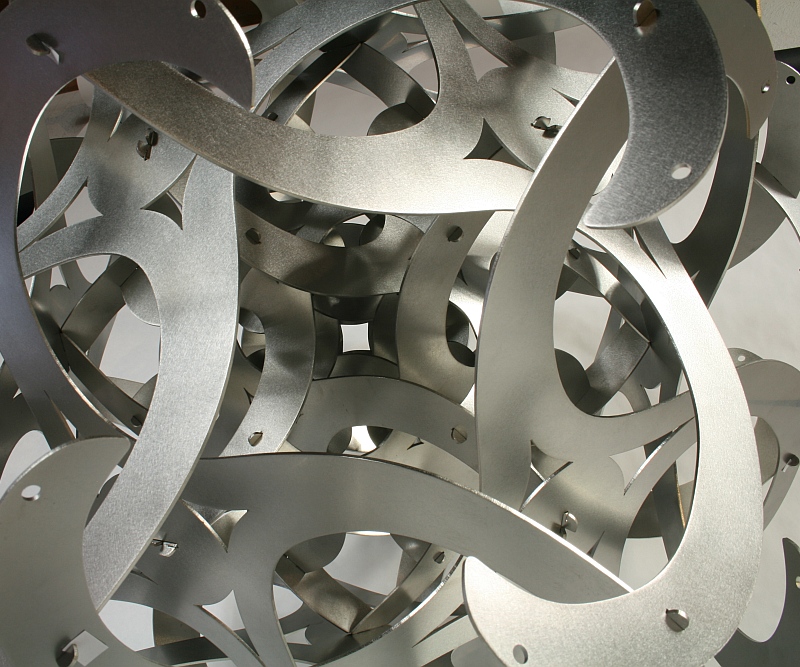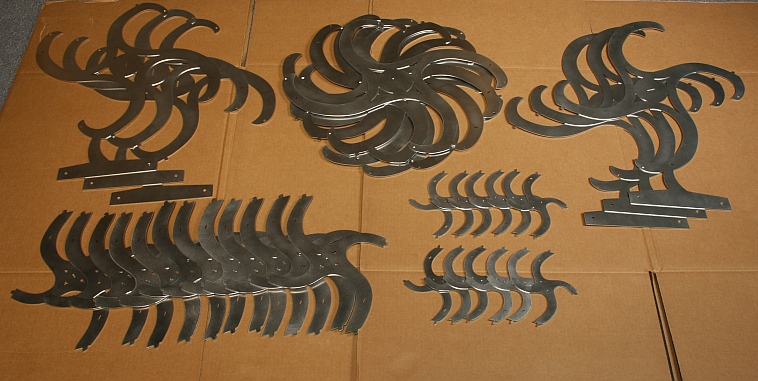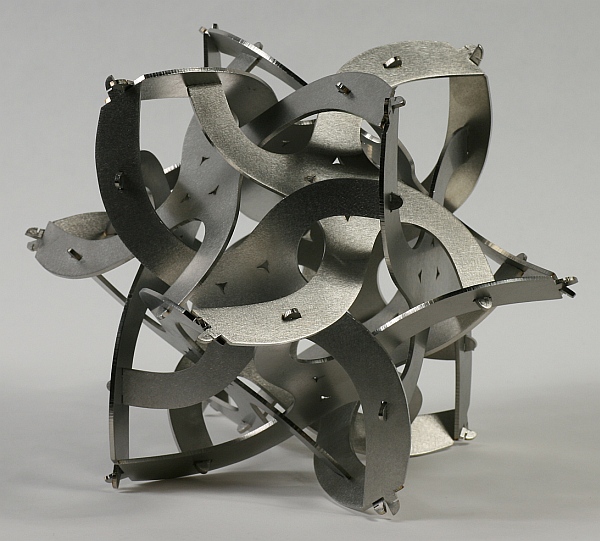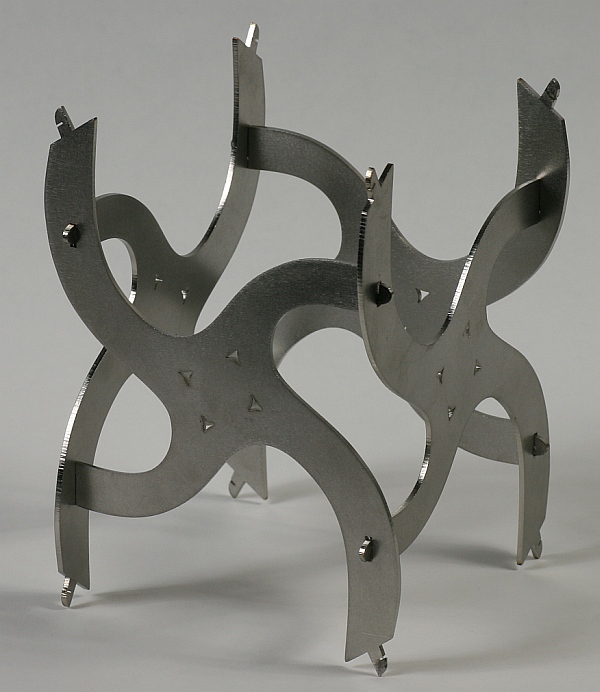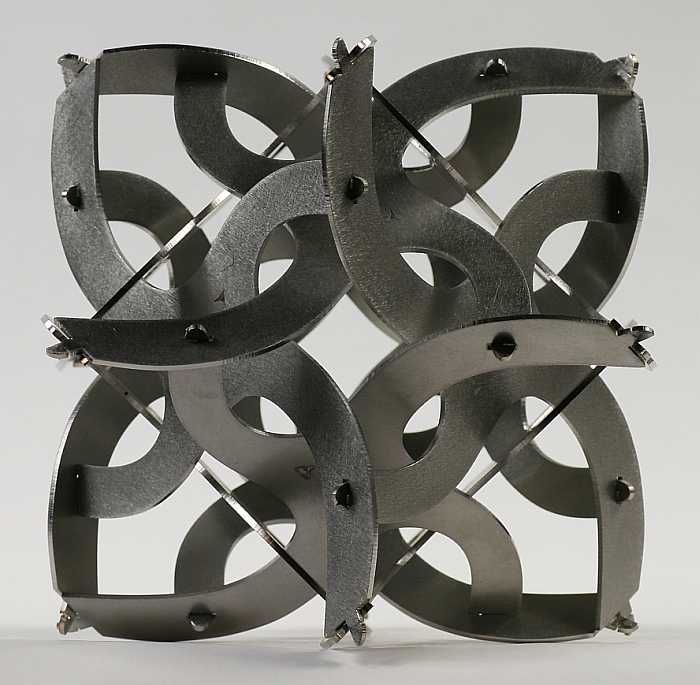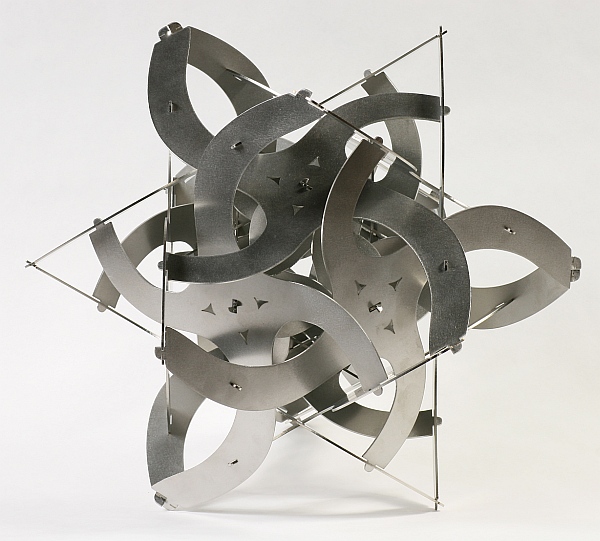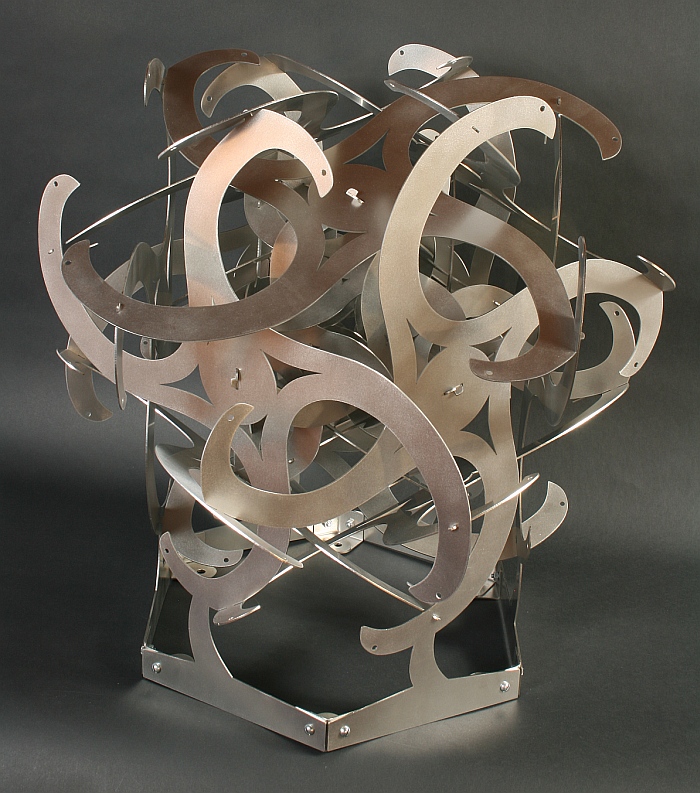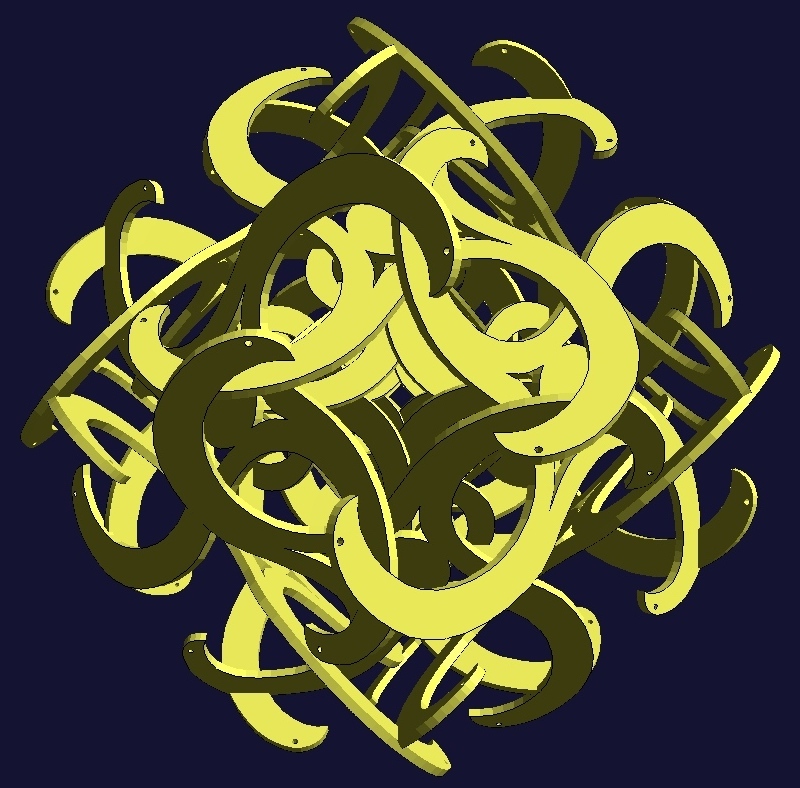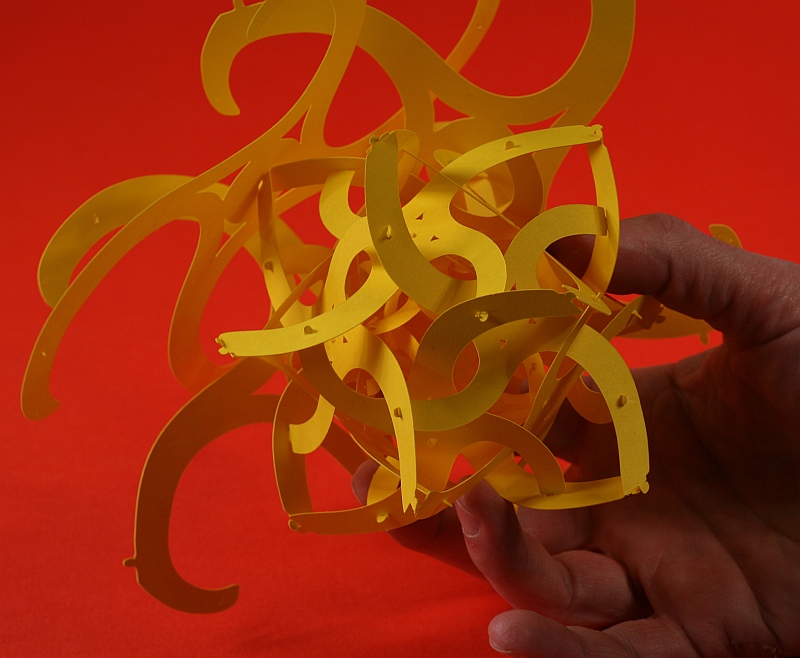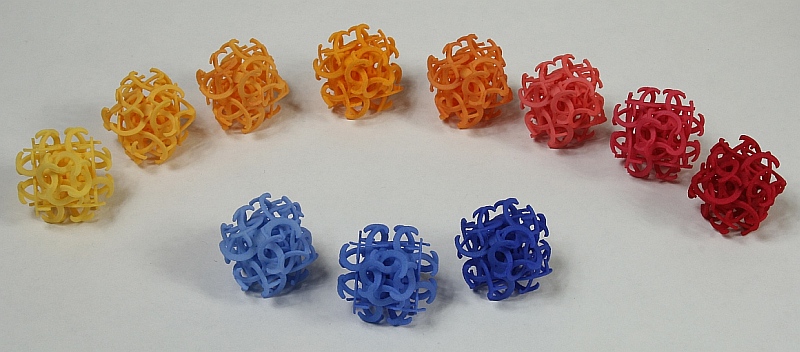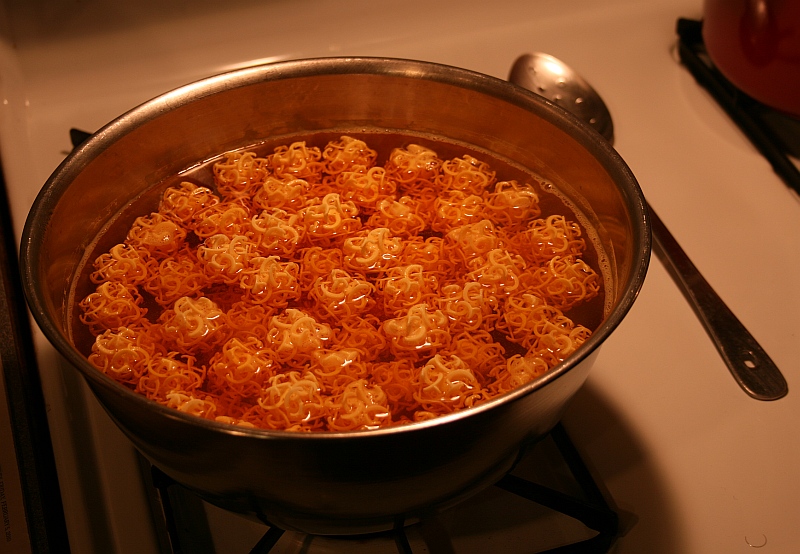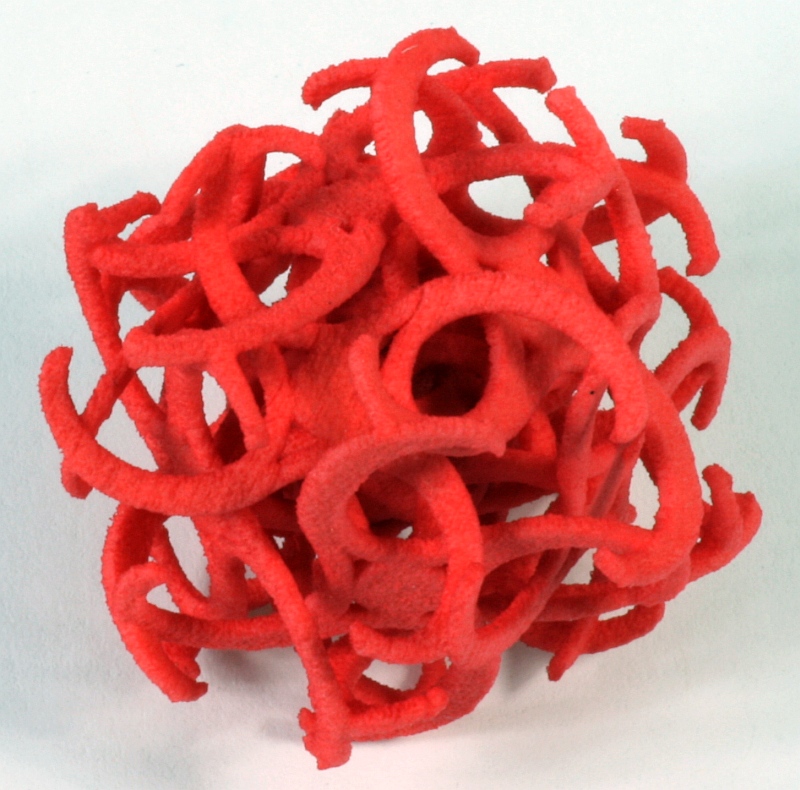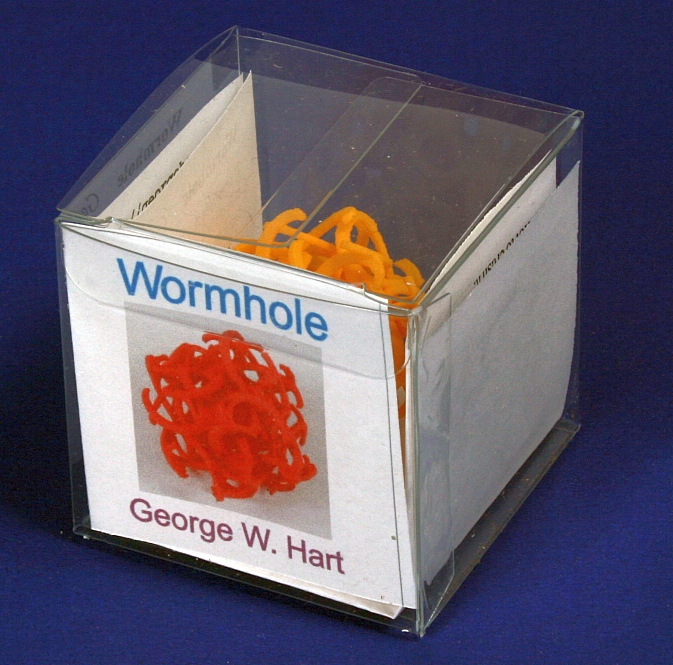George W. Hart
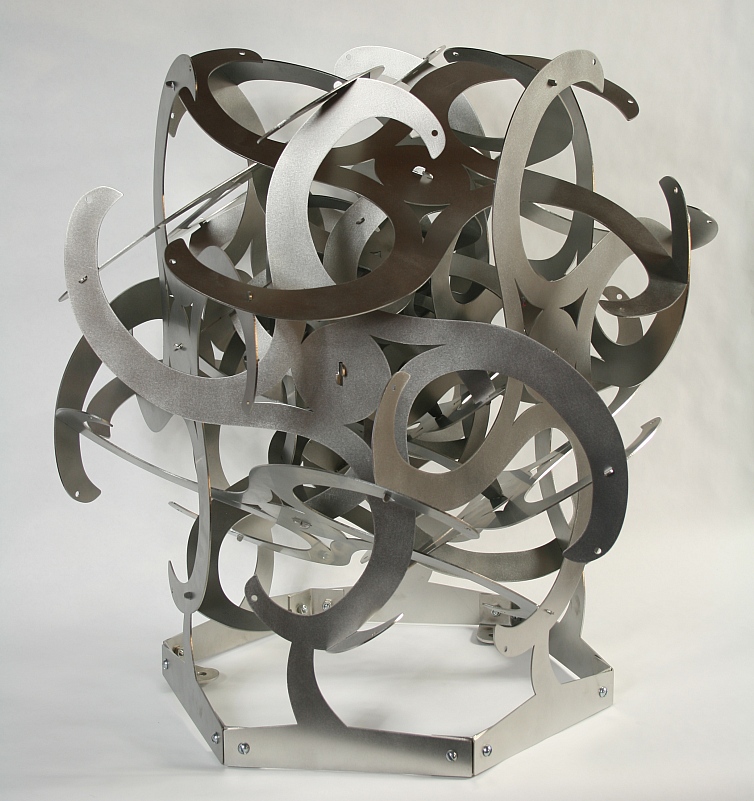
Wormhole
is a 27-inch diameter, stainless steel sculpture that I designed
to be assembled as a sculpture barn raising at the
2010 Gathering for
Gardner conference in Atlanta. The page explains the design and shows
the test fit and preparations before the group assembly at the
conference. The exterior of the design contains
twelve symmetrically arranged four-armed “galactic” forms, arranged
with octahedral rotational symmetry in the planes of a rhombic
dodecahedron. These twelve parts are identical, except that six extend
downwards to a base. The worm-like arms come in two shapes,
carefully calculated to pass around their
near neighbors, and then connect to a further neighbor (of the other
shape) in an orthogonal plane, to give a swirling “worm ball” effect.
The orthogonality of the outer connection planes allows for a simple
tab-and-slot assembly mechanism. Inside the outer form is a second
level at half scale and inside that is a third layer at quarter
scale.
This could be continued, but three layers are enough to create a
visually interesting interior space and suggest an
infinite geometric series leading towards a singularity at the center.
